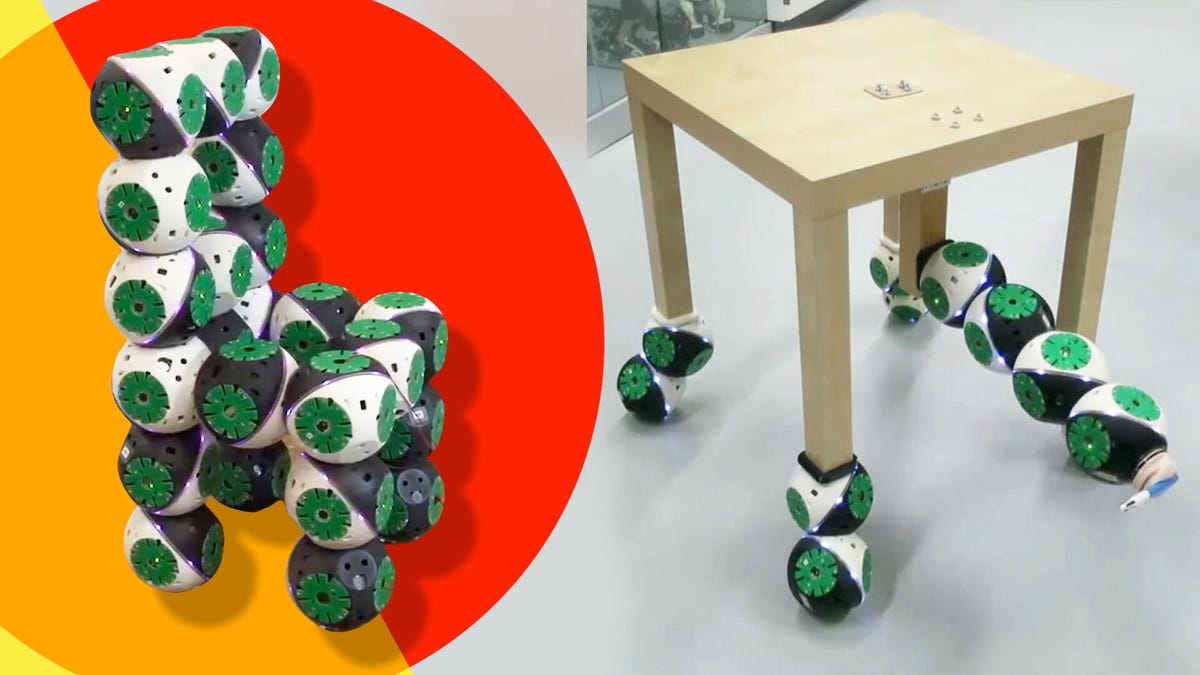These modular robots self-assemble to make furniture
Swiss researchers have developed Roombots to make, move and enhance furniture.

Roombots can self-assemble into furniture or enhance existing furniture.
For people with limited mobility or living space, Roombots could be a game changer. The tiny interlocking robotic orbs are being developed by the Swiss Federal Institute of Technology Lausanne (EPFL). While Roombots are still in the proof-of-concept stage of development, a recent video shows off the limitless potential of this technology.
The Roombots are shown self-assembling into a chair, with an occasional human assist to nudge them into position or change batteries. The Roombots also show off their gripping capabilities, opening a bottled drink and picking a pen up off the floor.
The robots can even combine with existing furniture to help enhance them -- such as creating wheels to help push around tables and chairs. Or adding a moving arm to a table that can pick up objects from the floor.
For people living in small spaces, modular robotic furniture like this could be a serious space saver. For people with limited mobility, having furniture that can move itself and help grasp hard-to-reach objects could be a huge help. And theoretically, when you don't need the furniture anymore, the bots will collapse apart on their own.
The Roombots aren't the only ones in this space: MIT is working on its own modular robots , called M-Blocks 2.0. These robotic blocks use magnets to attach to one another and a barcode-like system to identify one another.
While these modular robots from MIT and EPFL show enormous potential, we're still probably years if not decades away from having modular robots in our homes.
Watch the embedded video to see exactly how these robots transform into different objects.

